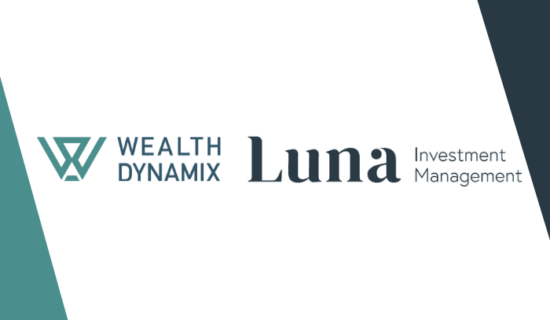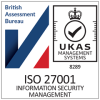Revolution of the client onboarding process lies very close to the top of many firm’s priority list. As a fundamental necessity of the client lifecycle, every wealth management business has an onboarding solution, yet these solutions are all too often a source of dissatisfaction for the client. As the bar for slick, intuitive digital services continue to be raised by retail banks, insurance firms and ‘Big Tech’ companies, client expectations from their wealth manager are also increasing, adding urgency to the need to re-evaluate the people, processes and technology involved in the onboarding process.
The challenges
A review of industry surveys and reports reveals the true scope of the challenge faced by the wealth management industry:
- Length of process – 14 to 22 days on average, with the need to contact the customer on an average of 10 times.
- Process abandonment – As many as 68% of clients are reported to abandon the process halfway through.
- Satisfaction levels – Of the clients who do persevere to complete the process, many regard the onboarding process as ‘unsatisfactory’, with 70% of firms still reliant on paperwork with physical, rather than digital signatures. Client satisfaction always matters, yet the fact that some 65% of inheritors do not intend to continue using their parents’ financial advisor after they receive an inheritance serves to add further emphasis to the point.
The wider implications
Of course, none of these create a desirable or sound foundation for a productive and healthy client-advisor relationship, but a complex and lengthy onboarding process is not only a headache for the client. For advisors, operational and compliance staff, the time-sink and sense of overwhelm caused by an inefficient onboarding process is compounded by the fact that these staff are often attempting to manage a raft of onboarding cases in parallel.
Interestingly, even as we might consider the wealth management sector within a period of digital transformation, only 2% of wealth managers surveyed believe their onboarding process to be entirely automated, and for a surprising 19%, the process is still entirely manual. Such statistics convey the size and relevance of the issue, not to mention the considerable cost of this ongoing inefficiency to the business. Indeed, the average cost to onboarding a simple client still stands at $2,000 dollars, rising significantly for complex clients. And the cost of manually-centric process is not the only problem a lack of proper process orchestration creates – nearly 60% of firms report onboarding regulatory challenges as a major difficulty.
How to meet customer expectations
Firms lacking the optimal supporting technology will likely regard the onboarding process as a threat. Yet, it can also present a significant opportunity. Get it right and your firm could be amongst those able to ‘mop up’ dissatisfied clients in search of a secure, intuitive onboarding experience supported with time-saving technologies including digital ID&V checks, OCR-driven automatic form filling and e-signatures.
Harness the potential of modern CLM solutions to revolutionise onboarding processes and the potential rewards are significant. But before proceeding to overhaul your technology, it’s essential to first consider exactly who you are trying to please – not all customers are created equal and so there is no ‘one-size fits all’ approach.
By way of example, meeting the expectations of a UHNW individual looking for a multi-faceted private banking services will require a completely different strategy to catering for a mass-affluent individual being onboarded into a ‘wealth incubator’ segment offering a singular service to invest in one of four risk-appropriate funds.
Mapping the journey for each client segment
Drawing on our experience of delivering effective Client Lifecycle Management solutions to wealth management firms and private banks, we recommend you scrutinise three particular areas:
Touchpoints – It is vital to consider the bigger picture when it comes to how many touchpoints are appropriate and desirable, as well as the channels via which those touch points are delivered. For an UHNW, a high-touch, human-centric journey is a key ingredient in providing the sort of ‘white-glove’, personalised, exclusive service such customers expect. At the other end of the wealth spectrum, a mass-affluent customer who experiences a high degree of contact may view it as just another unnecessary barrier to getting their account up and running swiftly. If they do want to make contact, it will likely be on their terms and via the channels of highest convenience – usually digital.
“For an UHNW, high-touch engagement via instant chat is perhaps less appropriate than a phone call or personalised email, instigated by the firm. For a mass-affluent prospect, instant messages and even chatbots may be more likely to be received as quick and convenient. Context is everything.”
Johnny Beloe, Director of Pre-Sales, Wealth Dynamix
Where digital enters the customer journey – The next point to consider is where the digital experience is first introduced into the customer journey. Research conducted by Accenture suggests that 65% of customers are looking for a digitally-led, self-directed experience. So, what are the other 35% looking for, and who are they? Supporting something of stereotype – it is the younger demographic who prefer digital experiences to the Silent Generation, Baby Boomers and Generation X. Many of the latter prefer a hybrid experience to a fully digital one. This raises the question of which elements of a journey should be digital versus human. If we go back to the UHNWs segmentation, how can we add in digital tools without cannibalising the sense of a white glove, exclusive service that these customers are looking for?
The answer lies in considering the end-to-end customer journey, utilising digital capabilities where they will most effectively remove friction for such customers. This way, you can find the happy medium – continuing to execute early engagement and proposal discussions in a more traditional manner yet introducing digital tools later in the journey to facilitate KYC data provision, document provision and e-signature.
Contrast this to the customer journey for an alternative segment of client, to the mass-affluent or the younger ‘digital-first’ generations. Here it may make more sense to begin the digital journey right up front; from your website or an AppStore or PlayStore app.
Scope of digital tool set – Finally, it is important to consider how these customer journeys, tailored for different segments, should impact the digital tool set offered. Certainly, there are commonalities; customers always need to be able to provide or update KYC data and documents, and complete e-signatures. But in the case of ‘digital-first’ journeys, these digital fundamentals need to be supplemented with digital tools appropriate to the earlier parts of their customer journey; the ability to select a customer type, browse product and service offerings and to absorb related marketing and educational material for example. By contrast, these are all aspects of the journey that – in the hybrid world – will be already covered via personal touch points with the prospect, and so will not require digital solutions.
One final point in pursuit of perfection
In the above considerations, a heavy emphasis has been placed on the importance of segmentation. Yet it is important also to not overlook the preferences of each individual customer and to accommodate for such preferences where it is viable to do so. Just because most of the younger generation prefer digital-first experiences, it does not mean necessarily that all do; not every individual will fully align with the characteristics and behaviours generally associated with their age or level of wealth. Don’t just take our word for it, surveys estimate 90% of clients find the personalisation of their experience particularly appealing. Therefore, where viable in terms of cost versus potential benefits, customer preference should also come into the equation, allowing for the ultimate freedom – that of personal choice.
To begin the transformation of your onboarding journey, download our Whitepaper: Defining Onboarding today.





